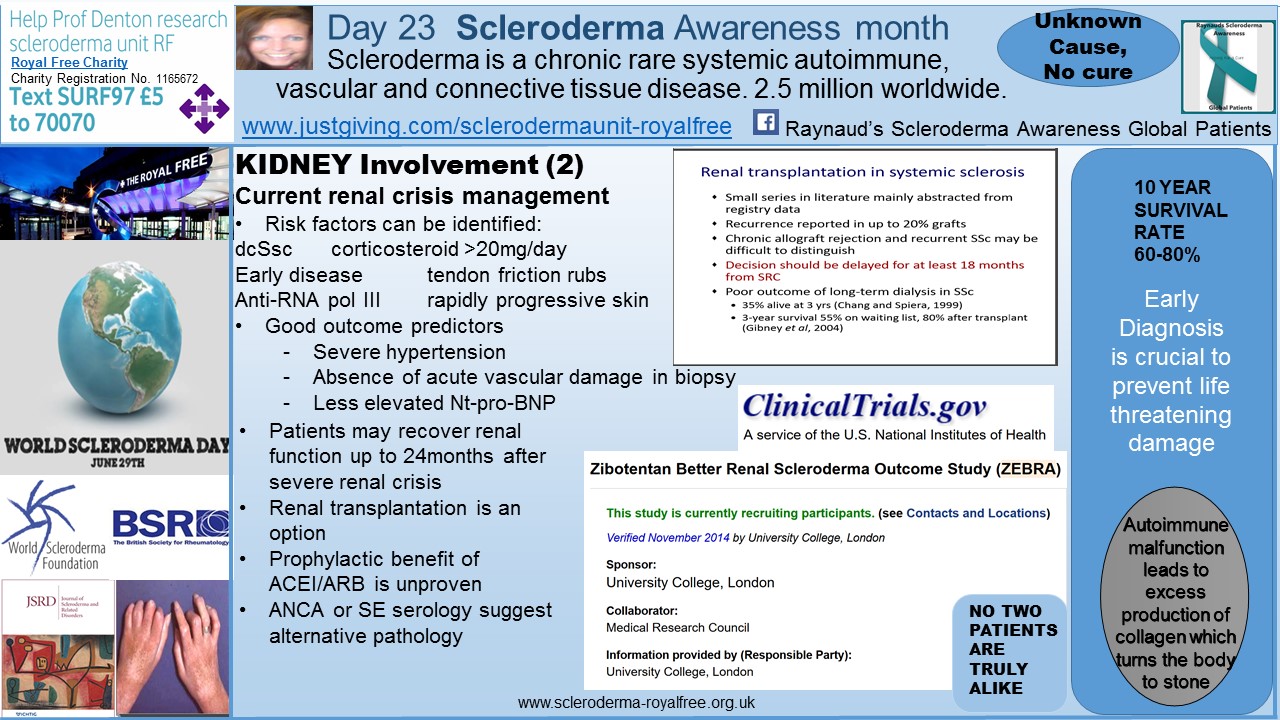DAY 23 Scleroderma Awareness Month: KIDNEY / RENAL Management
Written by |

As discussed in the Day 3 Scleroderma Awareness Month post – Scleroderma can affect all body parts. To read this post, click here.
I also focussed on the Kidney and Renal involvement for the Day 15 Scleroderma Awareness Month post, where I focussed on the symptoms of kidney involvement and kidney crisis. To read this post, click here
Today’s image above focuses on the risk factors and treatments used to attempt to control the symptoms when the kidney is affected by scleroderma.
Kidney involvement used to be the main contributor to death in scleroderma patients. However, due to improved understanding and treatments being made available, this is now no longer the case, with lung involvement now the main contributor to life threatening complications.
As can be seen in the image, there is no cure as such for kidney involvement, and treatments only target symptom suppression. If the relevant kidney bio-markers are prevalent, some patients may benefit from taking ACEi (AngiotensinConvertingEnzyme inhibitor) drugs to try and prevent further organ damage. This class of drugs has improved the outlook of the scleroderma patient with kidney involvement significantly.
In the event that a patient has experienced irreversible kidney damage, a transplant may be a final option, as by the indicated guidelines.
To see the UK Scleroderma Study Group Guidelines, click here.
Over the last few decades, clinical trials have focused on better understanding of the mechanisms and processes involved in the scleroderma affected kidney, thereby, improving life expectancy and quality of life for this type of patient.
The Zibotentan Better Renal Scleroderma Outcome Study (ZEBRA) is currently recruiting scleroderma patients with kidney involvement.
To learn more about this, click here.






